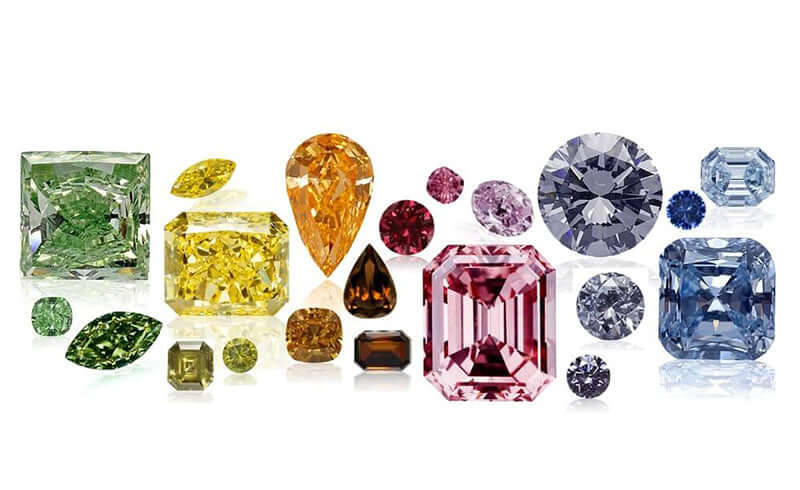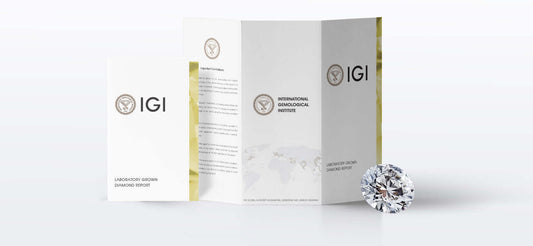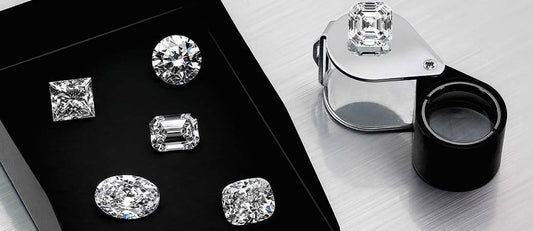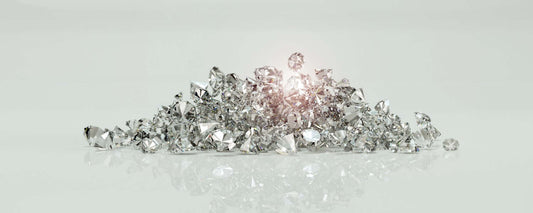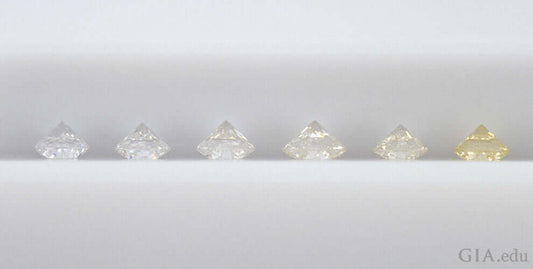What Is a Fancy Color Diamond? How Is It Different from Colorless Diamonds?
The color of a fancy color diamond is the color that cannot be absorbed. There are great differences in the color and grading standards between colored diamonds and colorless diamonds. When buying a colored diamond, the hue, tone, saturation and distribution of color are more important than the clarity and cut of the diamond. Contrary to colorless diamonds, the more intense the color, the more valuable it is.
Colors of Fancy Color Diamonds
If the color of a natural diamond is within the range of the rainbow spectrum, that is, red, orange, yellow, green, blue, pink, purple, etc., it means that the diamond is extremely valuable and precious. Colored diamonds have always received a lot of media attention, often breaking auction house records because of their uniqueness and rarity. Certain natural fancy colored diamonds are far rarer than diamonds in the D to Z color range.
Diamonds formed from carbon atoms, under billions of years of high temperature and the influence of radiation or natural elements, gradually developed unique attractive colors and became colored diamonds. There is only 1 colored diamond in every 10,000 polished diamonds. The more precious, fancy vivid colored diamonds have only 1 in 25,000 diamonds, and are extremely valuable. Among the many colors of fancy colored diamonds, yellow and brown are the most common; red, pink, green and blue are the rarest.

Fancy Color Diamonds Grading
After years of research and validation, GIA has established a reliable and widely used grading standard for colored diamond. The following are terms used to describe color grades in colored diamond grading reports:
Faint, Very Light, Light, Fancy Light, Fancy, Fancy Dark, Fancy Intense, Fancy Deep and Fancy Vivid.


Factors in Choosing a Fancy Colored Diamond
When choosing a fancy color diamond, the saturation and distribution of color is the most important consideration, rather than the clarity and cut ratio of the diamond. The more saturated the color of the diamond, the more rare and precious the diamond, and the higher the price.
Secondly, the carat weight of colored diamonds should be considered. Carat undoubtedly has a certain degree of influence on the price of colored diamonds. It is because in the process of mining natural diamonds, the chance of discovering large diamonds is much lower than that of small diamonds. Therefore, large diamonds are rarer and their value is relatively much higher. The price of colored diamonds also increases exponentially with the carat weight.
For colored diamonds, the reason why the clarity and cut of diamonds are not as important is that compared to colorless diamonds, the color of colored diamonds will shield the inclusions, so that clarity is less critical. Furthermore, since diamond cut emphasizes scintillation or brilliance, while colored diamonds emphasize color; in some cases the natural color of a colored diamond may detract from its scintillation. And quite commonly, fancy colored diamonds are cut into unconventional shapes for color enhancement.
Lab Grown Fancy Color Diamonds
Whether laboratory-grown or naturally-mined, colored diamonds are rarer and more expensive than colorless diamonds. Although the color tone and saturation of lab grown colored diamonds are difficult to control directly during production, with increasingly advanced technology, manufacturers can treat the lab grown diamonds that are of higher carat and clarity, with HPHT methods, to change or intensify the color into a vivid fancy color diamond. The development of lab-grown technology turns colored diamonds, once extremely rare and only available at sky-high prices, into magnificent jewelry that is more affordable to the general public.

